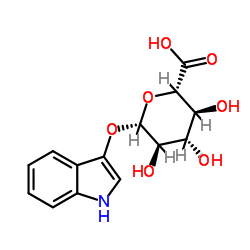Accumulation of indoxyl-beta-D-glucuronide in uremic serum: suppression of its production by oral sorbent and efficient removal by hemodialysis.
T Niwa, T Miyazaki, S Tsukushi, K Maeda, Y Tsubakihara, A Owada, T Shiigai
Index: Nephron 74(1) , 72-8, (1996)
Full Text: HTML
Abstract
We identified and quantified indoxyl-beta-D-glucuronide in uremic serum and urine to determine the metabolism of indoles including indoxyl sulfate in uremic patients. Serum levels of indoxyl-beta-D-glucuronide were markedly increased in undialyzed uremic patients, in patients on hemodialysis, and in patients on continuous ambulatory peritoneal dialysis. Urinary excretion of indoxyl-beta-D-glucuronide was also increased in undialyzed uremic patients. Urinary indoxyl-beta-D-glucuronide was significantly correlated with serum indoxyl sulfate, indicating that a high serum level of indoxyl sulfate leads to the enhanced synthesis of indoxyl-beta-D-glucuronide. Oral sorbent (AST-120) administration markedly decreased the serum and urine levels of indoxyl-beta-D-glucuronide as well as indoxyl sulfate in the undialyzed uremic patients. Serum indoxyl-beta-D-glucuronide could be efficiently removed by hemodialysis despite its high protein-binding ratio of about 50%. In conclusion, the serum level of indoxyl-beta-D-glucuronide increases in uremic patients due to renal insufficiency and its increased production. The production of indoxyl-beta-D-glucuronide can be suppressed by oral sorbent treatment, and serum indoxyl-beta-D-glucuronide can be efficiently removed by hemodialysis.
Related Compounds
| Structure | Name/CAS No. | Molecular Formula | Articles |
|---|---|---|---|
 |
1H-Indol-3-yl β-D-glucopyranosiduronic acid
CAS:35804-66-1 |
C14H15NO7 |
|
Rapid detection of Escherichia coli in urine samples by a ne...
1989-04-01 [J. Clin. Microbiol. 27 , 778-779, (1989)] |
|
[Evaluation of a new disk containing indoxyl-beta-D-glucuron...
1996-09-01 [Rinsho Byori. 44(9) , 895-8, (1996)] |
|
Rapid and specific detection of hydroxyl radical using an ul...
2001-05-01 [J. Agric. Food Chem. 49(5) , 2137-41, (2001)] |
|
Comparison of the recoveries of Escherichia coli and total c...
1996-01-01 [Appl. Environ. Microbiol. 62(1) , 203-8, (1996)] |
|
Indoxyl-beta-D-glucuronide, the primary emitter of low-level...
1994-08-01 [Clin. Chem. 40(8) , 1580-6, (1994)] |